Table of contents
White table wine is an alcoholic beverage made from the fermented juice of the berries of the noble grapevine ( Vitis vinifera).
Use in the kitchen
White table wine, like red table wine, is often drunk neat as an alcoholic beverage. It is also popular as a white wine spritzer or "white wine spritzer" by mixing it with sweet lemonade or carbonated mineral water in a 50:50 ratio.
In the kitchen, white wine is often used as a "cooking wine" to give the dish a tangy, fruity and slightly sour note. It gives the white wine sauce or risotto its typical taste. White wine soup with crispy croutons and cress is also popular. To bring out the best in the taste, the white wine should be reduced by more than half or boiled down slowly. It is also often used to refine sauces.
If you don't want to use white table wine in the kitchen because of the alcohol, you can replace it with sour must ( apple juice), vegetable broth or vegetable stock, white balsamic vinegar or lemon juice. You can also find alcohol-free white wines on the market.
Vegan recipe for white wine sauce
Ingredients (for 4 people): 1 onion, 1 teaspoon rapeseed oil, 1 teaspoonpepper, 200 ml white table wine, 200 ml oat cream, 1 tablespoon mustard, 1 teaspoon lemon juice, 1 pinch of salt, 1 pinch of ground nutmeg.
Preparation: Peel the onions and cut them into very small cubes. Put oil in a pan and sauté the onions over a medium heat for about 5 minutes. Season with pepper. Then add the white wine, lemon juice, mustard and oat cream and season with salt and nutmeg. Simmer for 10 minutes over a medium heat.
Vegan recipes with white table wine can be found under the note: " Recipes that have the most of this ingredient ".
| Not only vegans or vegetarians should read this: Vegans often eat unhealthily. Avoidable nutritional errors. |
Purchasing - Storage
White table wine can be bought from major retailers such as Coop, Denner, Volg, Spar, Aldi, Lidl, Rewe, Edeka, Hofer and Billa, some of which are organic. Migros sells white wine via its online shop. Organic wines can also be found in Denn's Biomarkt and Alnatura. Table wine is available all year round.
The availability of white table wine varies depending on the size of the store, catchment area, etc. If you are interested, click on our recorded food prices for the DA-CH countries (above under the ingredient image). There you will find current prices from various supermarkets and their price development.
Conventionally produced wine is often sulphurized several times. This is indicated on the label with "contains sulphites ". "Unsulphurized" wines can sometimes be found in organic supermarkets and specialist wine shops. There are also increasingly low-alcohol or alcohol-free wines on the market that do not differ in taste from regular wines. So-called "natural wines" are also becoming increasingly popular. These are produced without the addition of pure yeast (wine yeast), but through "natural" spontaneous fermentation. The wines are not sulphurized and are not refined or clarified.
What is vegan wine? In conventional wine production, animal products (egg white or gelatin) are usually used to filter out the cloudy substances (fining). Vegan wine, on the other hand, is filtered with mineral earth (betontite). 9
Storage tips
Table wine should be drunk within a year and is therefore not intended for long-term storage. It can be kept at room temperature or in the cellar. It is important to keep it at a constant temperature and to protect it from light and heat. If possible, store it lying down. Opened table wine will keep in the fridge for around a week. With a wine vacuum pump and a suitable stopper, the oxygen can be extracted from the bottle and the shelf life can be extended by a few days.
Ingredients - Nutritional values - Calories
100 g of white table wine has an energy content of 82 kcal. It is fat-free and almost protein-free (0.07 g/100g protein). The carbohydrate content is low at 2.6 g/100g. 1 White table wine contains an average of 11.5-14% alcohol by volume. 2 It contains small amounts of fluorine, manganese and potassium, among other things. 1
In comparison, red table wine contains slightly more calories (85 kcal/100g) and a higher alcohol content of 12-14.5% vol. 1,2
The complete ingredients of white table wine, the coverage of the daily requirement and comparison values with other ingredients can be found in our nutrient tables. In the article Nutrients explained you will get a detailed insight into the topic.
Effects on health
The effect of wine consumption on health has been the subject of a long-standing debate. Several epidemiological studies show that people with low to moderate consumption of alcoholic beverages have a lower risk of cardiovascular disease and a reduction in overall mortality (death rate) than people who do not consume alcoholic beverages or who consume large amounts. 13,14 The effect was observed with the consumption of (red) wine, beer and spirits. Therefore, the effect could also be due to the alcohol and not to the bioactive substances contained. 14,15
Studies show that the content of bioactive substances such as flavonoids and polyphenols is lower in white wine than in red wine. 13 These are mainly found in the seeds and skins of the grapes. Since white wine is made from the juice of the berries and not from the mash (juice and solid parts of the grapes), fewer bioactive substances end up in the wine than in red wine, which is produced by mash fermentation (more on this under Industrial Production). The proportion of resveratrol, which has anti-cancer properties, is also lower. 13,16,17
For more information on the health benefits of wine, see the link to the ingredient red table wine.
The potentially health-promoting effects of moderate wine consumption should not be overestimated, as long-term consumption of alcoholic beverages in large quantities leads to long-term and sometimes life-threatening negative consequences.
Dangers - Intolerances - Side effects
White table wine contains alcohol. Humans have a mechanism for breaking down alcohol (ethanol). However, this is geared towards minimal amounts and not the ethanol content that is common in alcoholic beverages. The main place where ethanol is broken down is the liver. There, certain enzymes (alcohol dehydrogenase ADH) oxidize the ethanol to toxic acetaldehyde, which in turn is further oxidized to acetate by other enzymes (aldehyde dehydrogenase ALDH). Long-term and high alcohol consumption can lead to liver damage (fatty liver and liver cirrhosis). Other consequences can include reflux (heartburn), high blood pressure, obesity, damage to the nervous system and an increased risk of cancer. 11
Does alcohol evaporate when cooking? Cooking always leads to a certain but not complete loss of alcohol. The alcohol content is reduced especially when cooking for a long time at high temperatures. This means that a large part of it evaporates if you add it at the beginning of the cooking time. Small containers lead to a smaller loss of alcohol. 4 Even after a cooking time of two and a half hours, 5% of the alcohol content can still be present. 5 When braising in a closed container, the alcohol content hardly decreases, as the alcohol-containing vapor condenses on the lid and returns to the dish. 6
White wine contains small amounts of histamine. Alcohol is also a histamine liberator, meaning it releases the histamine stored in the body. People with histamine intolerance should limit or avoid alcohol consumption. 12
Ecological footprint - animal welfare
The ecological CO 2 footprint of wine depends, among other things, on grape production and processing, transport routes and packaging. In a 2020 study for products in Germany, an amount of 1.0 kg CO 2 eq was calculated for 0.75 liters of wine in a disposable glass bottle, which means 1.33 kg CO 2 eq are produced per kg of wine. 18 The largest contribution to the resulting emissions comes from both wine growing and the use of glass bottles as packaging material. 19
The amount of water needed to produce 1 kg of wine is 869 litres, slightly more than for the production of grape juice (675 litres). 20 A large part of this water is used to grow the grapes. This is a particularly big problem in countries that are already struggling with water shortages due to climatic conditions and have to resort to artificial irrigation to irrigate the grapes (for example Italy). 21 With the future prospect of rising temperatures and increased droughts as a result of climate change, wine growing in Central Europe is facing a challenge. 22
In organic viticulture, where synthetic pesticides and herbicides are not allowed to be used, dealing with mildew and other fungal diseases is a major problem. Often, copper-containing pesticides are used instead, but due to their ecotoxicological properties, these have a negative impact on the environment, just like the herbicides used in conventional agriculture. 23 Intensive research is currently being carried out to find effective alternatives.
In order to promote biodiversity in viticulture, one can, for example, refrain from mowing and mulching the vineyard rows and sow wild flowers, as is already practiced by some winegrowers. 24
Worldwide occurrence - cultivation
The oldest evidence of wine production comes from Egypt and Assyria and dates back to 3500 BC. The grapevine Vitis vinifera ssp. vinifera originally comes from the Near East. Grapevines have been cultivated in Greece since 1500 BC and today throughout the Mediterranean and Central Europe. Knowledge of wine production spread along with the cultivation of grapevines. 7
According to FAOSTAT, 26.7 million tons of wine were produced worldwide in 2020. The main producers were Italy (5.1 million tons), France (4.4 million tons) and Spain (4.1 million tons). 8
Cultivation - Harvest
Wine is made from the berries of the noble grapevine. Harvesting and vintage were traditionally done by hand (hand-picking) or with the help of machines (mechanical harvesting). In Europe, grapes are harvested from September to November. After harvesting, the grapes are sorted and the stalks and stalks are separated from the grapes (destemming). Nowadays, this is sometimes done mechanically using a vibrating and shaking technique. 7
Industrial production
White wine is made from white grapes. In contrast to red wine, when making white wine the must (juice without solid components) is fermented instead of the mash (which still contains the grape skins).
After the harvest, vintage and destemming, the grapes are crushed by squeezing (mashing). The grape seeds must not be damaged, as this would release tannins that make the wine bitter. An initial sulphurization stops any spontaneous fermentation. The mash is then separated into juice (must) and solid components (pomace). This process is called pressing. The must is fermented by adding pure yeast (wine yeast). The yeast converts the sugar it contains into alcohol and carbon dioxide. Fermentation takes place until the sugar it contains is converted or the alcohol content rises so high that the yeast dies. The young wine is then sulphurized to stabilize it and kill the yeast. This is followed by what is known as wine aging, in which the wine is poured into barrels (racking) and sulphurized again, and if necessary deacidified and blended (mixing different wines). After clarification and fining (filtration of the sediment), the wine is filled into barrels (quality wine) or bottles (table wine) for maturation and storage. 7,10
One specialty is orange wine, a white wine that is made like red wine. The white wine grapes are fermented with the skins (mash) instead of just the juice (must). This releases more colorants and tannins. This gives it the dark yellow to orange color.
Further information
White wine is made from grapes from the noble grapevine ( Vitis vinifera subsp. vinifera). This belongs to the genus of grapevines ( Vitis), which is part of the grapevine family (Vitaceae). The individual fruits of the fruit cluster are called grape berries, colloquially often called wine grapes. Grapes can be eaten raw (table grapes), dried to make raisins or processed into grape juice, wine and brandy. Spirits such as grappa are made from pomace, the press residue from wine production. Grape seed oil is obtained from the seeds of grapes.
Table wine, also known as drinking wine, is a young wine that cannot usually be stored and is intended for rapid consumption (within a year). It is a wine without an indication of origin or year and is not subject to any special quality testing. It therefore belongs to the lowest quality level of wine. In contrast, quality wine or Prädikatswein are officially tested wines in which the selection of grape varieties is more limited and the specifications regarding production processes are stricter.
Alternative names
Table wine is also known as drinking wine and country wine. Other names are everyday wine, consumption wine, draft wine, pint wine, table wine, tap wine or drinking wine. The English name is table wine or dinner wine.
Bibliography - 23 Sources (Link to the evidence)
| 1. | USDA United States Department of Agriculture. |
| 2. | Wein-Plus. Wie viel Prozent Alkohol hat Wein? |
| 4. | Cunningham E, Marcason W. Question of the month. Does the alcohol used in cooking burn off completely? J Am Diet Assoc. 2002 Apr;102(4): 536. |
| 5. | USDA Table of Nutrient Retention Factors, Release 6. National Agricultural Library. United States Department of Agriculture. 2007. |
| 6. | Luzerner Zeitung Wie viel Alkohol bleibt beim Kochen zurück? |
| 7. | Rimbach G, Nagursky J, Erbersdobler HF. Lebensmittel-Warenkunde für Einsteiger (2. Auflage). Heidelberg: Springer-Verlag Berlin; 2015. |
| 8. | FAOSTAT Food and Agriculture Organization of the United Nations. Wine (Production Quantity 2020). |
| 9. | Wein.Plus Was ist veganer Wein? |
| 10. | Wein.Plus Wie wird Weisswein hergestellt? |
| 11. | Biesalski HK, Grimm P. Taschenatlas der Ernährung (3. Auflage). Stuttgart und New York: Georg Thieme Verlag; 2004. |
| 12. | Institut für Ernährungsmedizin TU München. Ernährung bei Histaminintoleranz (PDF). |
| 13. | Hrelia S, Di Renzo L, Bavaresco L, Bernardi E, Malaguti M, Giacosa A. Moderate Wine Consumption and Health: A Narrative Review. Nutrients. 2022 Dec 30;15(1): 175. |
| 14. | Gronbaek M, Becker U, Johansen D, et al. Type of alcohol consumed and mortality from all causes, coronary heart disease, and cancer. Ann Intern Med 2000;133: 411–9. |
| 15. | Arranz S, Chiva-Blanch G, Valderas-Martínez P, Medina-Remón A, Lamuela-Raventós RM, Estruch R. Wine, beer, alcohol and polyphenols on cardiovascular disease and cancer. Nutrients. 2012 Jul;4(7): 759-781. |
| 16. | Clarke S, Bosman G, du Toit W, Aleixandre-Tudo JL. White wine phenolics: current methods of analysis. J Sci Food Agric. 2023 Jan 15;103(1):7-25. |
| 17. | Meng X, Zhou J, Zhao CN, Gan RY, Li HB. Health Benefits and Molecular Mechanisms of Resveratrol: A Narrative Review. Foods. 2020 Mar 14;9(3): 340. |
| 18. | Reinhardt G, Gärtner S, Wagner T. Ökologische Fussabdrücke von Lebensmitteln und Gerichten in Deutschland. Institut für Energie - und Umweltforschung Heidelberg. 2020. |
| 19. | Ferrara C & De Feo G. Life Cycle Assessment Application to the Wine Sector: A critical review. Sustainability. 2018; 10(2). |
| 20. | Mekonnen MM, Hoekstra AY. The green, blue and grey water footprint of crops and derived crop products. Hydrol. Earth Syst. Sci. 2011; 15: 1577-1600. |
| 21. | Zhiyenbek A, Bretta C, Ökobilanzierung Früchte- und Gemüseproduktion- eine Entscheidungsunterstützung für ökologisches Einkaufen, Hrsg. Eidesgenössische Technische Hochschule Zürich. Zürich 26.11. 2016. S. 31 |
| 22. | Droulia F & Charalampopoulos I. Future Climate Change Impacts on European viticulture: A Review on recent Scientific Advances. Atmosphere. 2021; 12(4). |
| 23. | Berkelmann-Löhnertz B, Heibertshausen D, Baus-Reichel O, et al. Ohne Kupfer geht es nicht - Status quo im ökologischen Weinbau nach 4 Jahren BÖL Verbundsprojekt. |
| 24. | Bioland. Jeder Quadratmeter zählt - Artenvielfalt im Weingut. Biolandwissen. 2022; Ausgabe 1; Seite 45-51. |

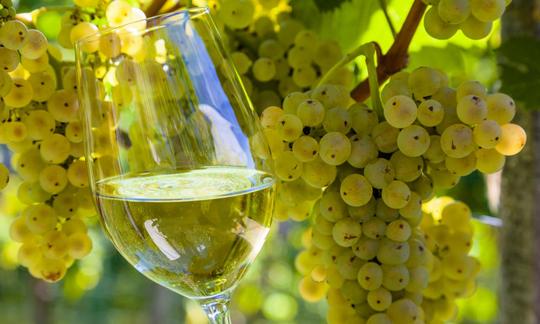

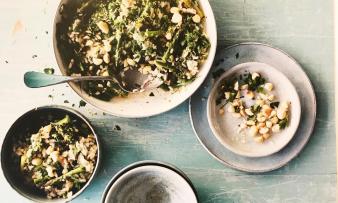
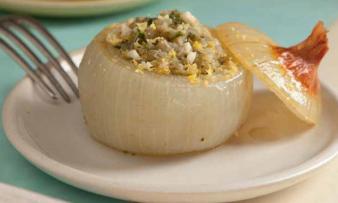
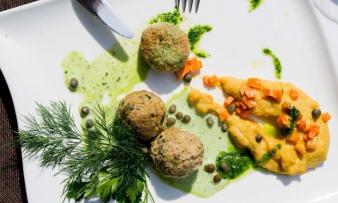
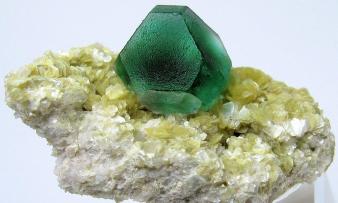




Comments